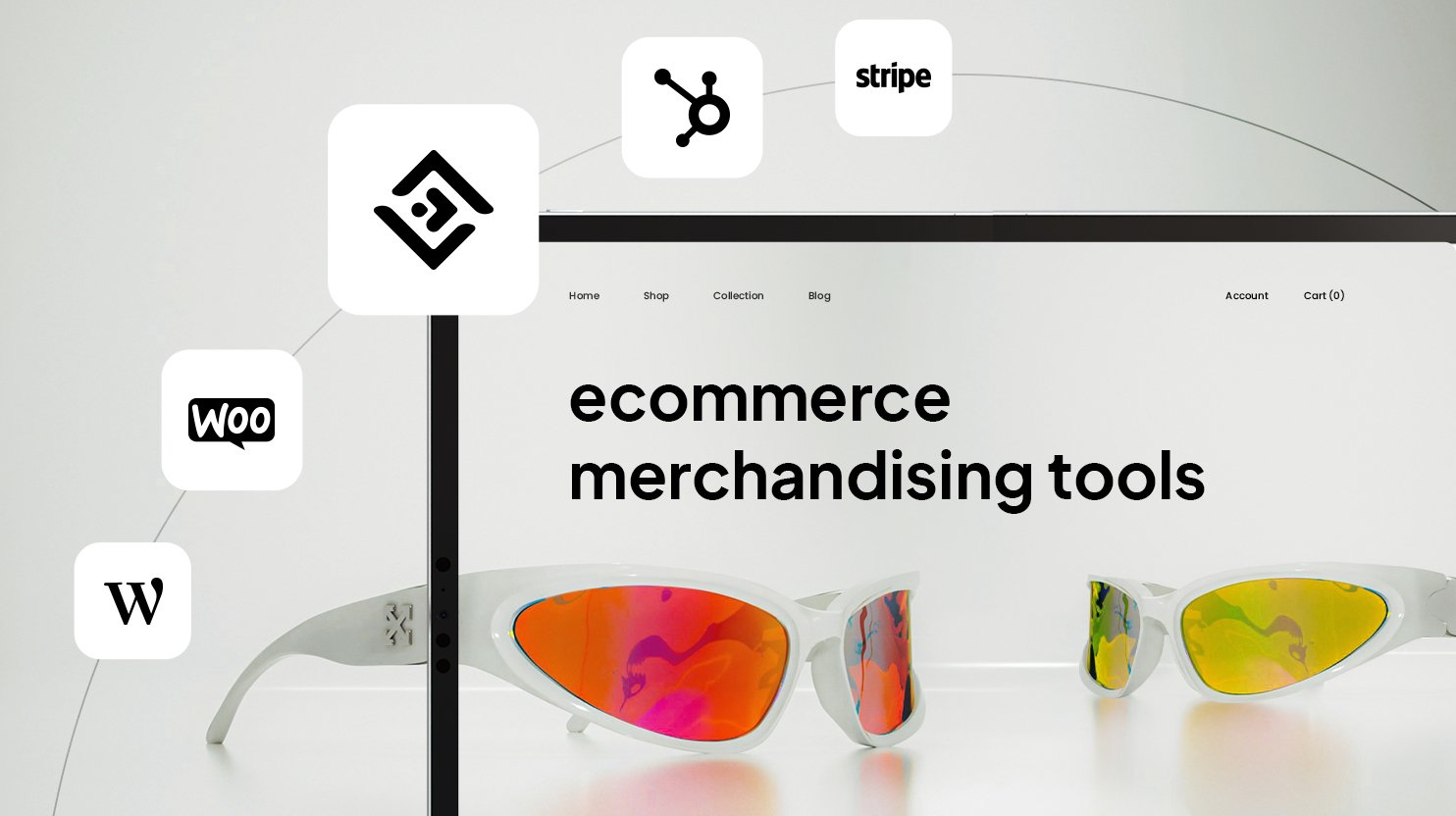Ecommerce merchandising tools help online stores display and promote products effectively. These tools aim to boost sales and improve customer experience. They can make shopping easier and more enjoyable for website visitors.
Ecommerce merchandising tools can handle tasks like product placement, recommendations, and visual displays. They use data and smart tech to show the right items to the right people at the right time. This article will explore the best tools available, their key features, and how to optimize their use to enhance online store performance.
FAQ
What are the best tools for online retailers?
How can I improve product visibility?
To improve product visibility, use high-quality images, optimize product descriptions with relevant keywords, implement effective categorization, and utilize product recommendation engines. Tools like Nosto and Dynamic Yield can help automate and enhance visibility.
Are there free options for small businesses?
Yes, there are free options for small businesses. WooCommerce is a free plugin for WordPress, and Ecwid offers a free plan for up to 10 products. Open-source solutions like PrestaShop and OpenCart are also available at no cost.
What tools help with cross-selling?
Tools that help with cross-selling include Segmentify, Unbxd, and Clerk.io. These solutions use AI and machine learning to analyze customer behavior and suggest relevant products, increasing average order value.
How do I optimize product placement?
To optimize product placement, use A/B testing tools like Optimizely or VWO to experiment with different layouts. Heat mapping tools like Hotjar can provide insights into user behavior and help identify the most effective placement strategies.
What tools assist with inventory management?
For inventory management, consider tools like Brightpearl, Ordoro, or Skubana. These solutions offer real-time inventory tracking, multi-channel synchronization, and automated reordering features.
How can I personalize customer experiences?
To personalize customer experiences, use tools like Dynamic Yield, Evergage, or RichRelevance. These platforms offer AI-driven personalization, segmentation capabilities, and real-time content optimization.
What features should I look for in a tool?
When choosing a merchandising tool, look for features like easy integration, customization options, analytics and reporting capabilities, mobile responsiveness, and scalability to accommodate business growth.
Create your online store in minutes!
Looking to sell online? Develop and launch your store with 10Web AI Ecommerce Website Builder.
Understanding ecommerce merchandising tools
Ecommerce merchandising tools help online retailers showcase products and boost sales. These digital solutions offer features to improve product visibility and customer experience.
Definition and purpose
Ecommerce merchandising tools are software programs that help online stores display and promote products. They aim to increase sales by making shopping easier and more enjoyable. These tools can show items based on what shoppers like, put popular products front and center, and create eye-catching displays.
The main goal is to guide customers to products they’re likely to buy. This can lead to more sales and happier customers. Good merchandising tools also save time for store owners by automating tasks like product placement and promotion.
Analyzing customer behavior
Understanding how customers shop on your site is key to boosting sales. Tools can show you what products people view most, what they buy, and where they leave your site.
Heat maps reveal where visitors click and scroll. This helps you place important elements where people will see them.
A/B testing tools let you try different layouts or offers. You can see which ones lead to more sales.
Cart abandonment trackers show why people don’t finish buying. You can then fix those issues or send follow-up emails.
Use these insights to improve your site. Move popular items to the top. Fix pages where people often leave. Offer help when customers seem stuck.
Key features to look for
When picking ecommerce merchandising tools, look for these important features:
- Product recommendations: The tool should suggest items based on what a shopper has viewed or bought.
- Search optimization: It needs to help customers find products quickly and easily.
- Visual merchandising: Look for tools that let you create attractive product displays and layouts.
- Analytics: Good tools offer data on how well your merchandising efforts are working.
- Mobile-friendly: Make sure the tool works well on phones and tablets.
- Personalization: The best tools tailor the shopping experience to each customer.
Benefits of using ecommerce merchandising tools
Ecommerce merchandising tools can boost your online store’s performance and improve customer satisfaction. These tools offer valuable features to enhance your digital storefront and drive sales.
Enhanced customer experience
Ecommerce merchandising tools help create a better shopping experience for your customers. They make it easier for shoppers to find what they’re looking for quickly.
These tools can personalize product recommendations based on a customer’s browsing history and past purchases. This helps shoppers discover items they might like but didn’t know about.
Mobile optimization is another key benefit. Many tools ensure your store looks great and works well on smartphones and tablets. This is important since more people shop on mobile devices now.
Some tools also offer virtual try-on features for clothes or makeup. This lets customers see how products might look on them before buying.
Increased sales and conversion rates
Using ecommerce merchandising tools can lead to more sales and higher conversion rates for your online store. These tools help you showcase your products in the best way possible.
They let you create eye-catching product displays and promotions. This can grab shoppers’ attention and encourage them to buy. You can highlight your best-selling items or promote special deals easily.
Many tools provide data on customer behavior. This helps you understand what products are popular and why. You can use this info to adjust your strategy and boost sales.
Some tools use AI to optimize product placement on your site. They can put the right items in front of the right customers at the right time. This smart approach can lead to more sales and happier customers.

Create your online store in minutes!
Looking to sell online? Develop and launch your store with 10Web AI Ecommerce Website Builder.
Integration with ecommerce platforms
Ecommerce merchandising tools need to work smoothly with online store platforms. This helps businesses manage products and boost sales more easily.
Compatibility considerations
When picking a merchandising tool, you need to check if it works with your ecommerce platform. Many tools connect with big names like Shopify, WooCommerce, and BigCommerce. Some are made just for one platform, while others work with many.
Before you choose, look at your current setup. Think about:
- The platform you use now
- Any plans to switch platforms later
- How well the tool fits with your other systems
It’s smart to pick a tool that can grow with your business. This way, you won’t need to change everything if you expand.
Api and plugin availability
APIs and plugins make it easier to connect merchandising tools with your store. They let different software talk to each other.
APIs are like bridges between programs. They help move data back and forth. Good APIs mean:
- Real-time updates of product info
- Automatic syncing of inventory
- Easier setup of new features
Plugins are pre-made add-ons. They often need just a few clicks to install. Look for tools with:
- A wide range of plugins
- Regular updates to stay current
- Support for custom plugins if needed
Top ecommerce merchandising tools
The right ecommerce merchandising tools enable businesses to optimize product displays, personalize shopping experiences, manage inventory efficiently, and analyze customer behavior. In this section, we’ll take a look at the top ecommerce merchandising tools to help you increase sales and conversions.
Adobe Commerce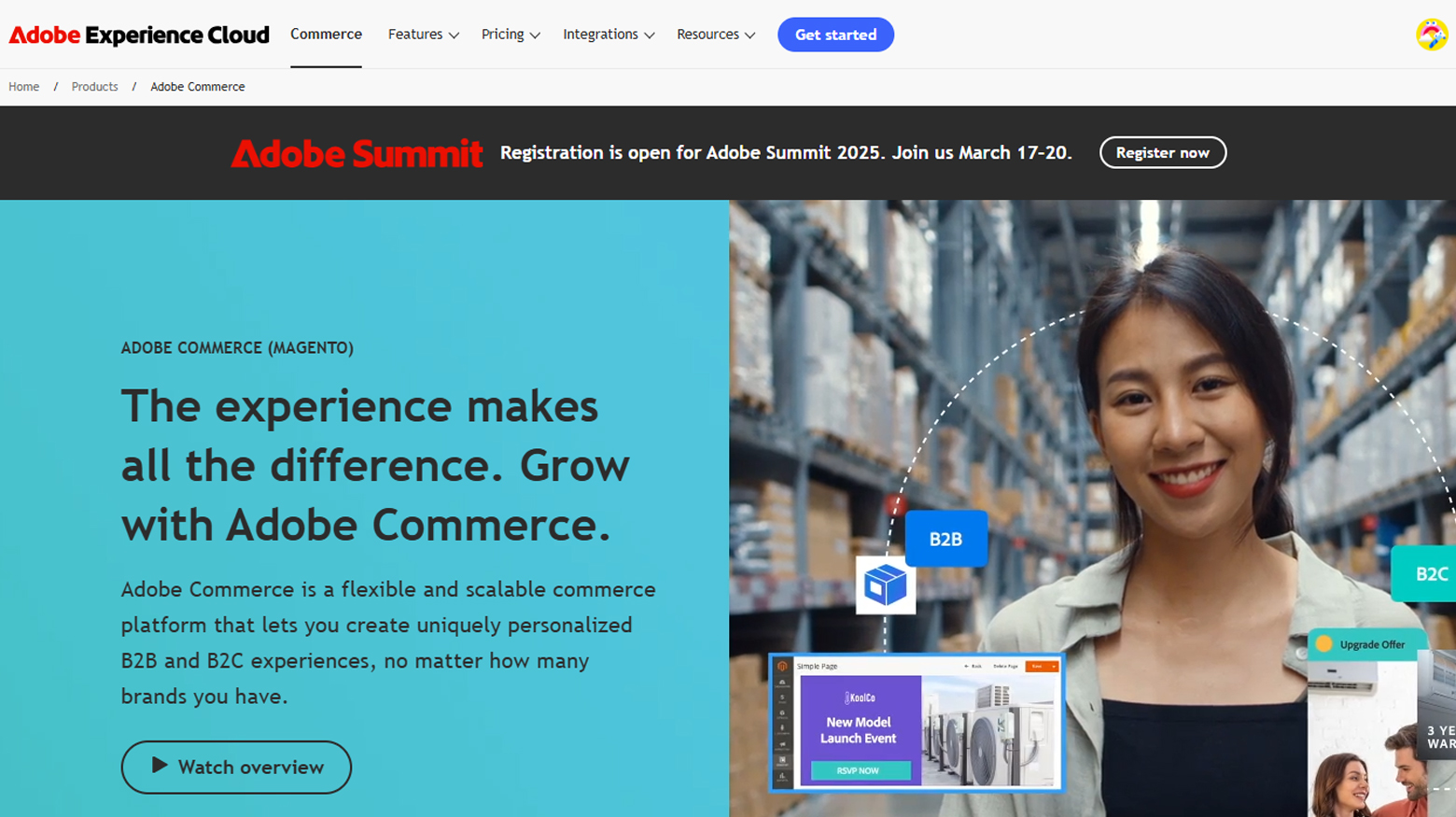
Adobe Commerce offers tools to help you sell more products online. You can use these tools to show items in your store in ways that catch shoppers’ eyes.
The Visual Merchandiser lets you move products around on your pages. You can drag and drop items to put best sellers up front. You can also set rules to show certain products first.
Adobe Commerce uses AI to make shopping more personal. It looks at what each customer likes and shows them items they might want to buy. This can help boost your sales.
You can also run sales and give out coupons easily. The system helps you set up discounts for specific groups or times. This can bring more people to your store.
| Pros | Cons |
|---|---|
| Easy to move products around | Can be complex for new users |
| AI helps show right products to customers | Might need time to set up well |
| Good for making sales and discounts | Some features may cost extra |

Create your online store in minutes!
Looking to sell online? Develop and launch your store with 10Web AI Ecommerce Website Builder.
Dynamic Yield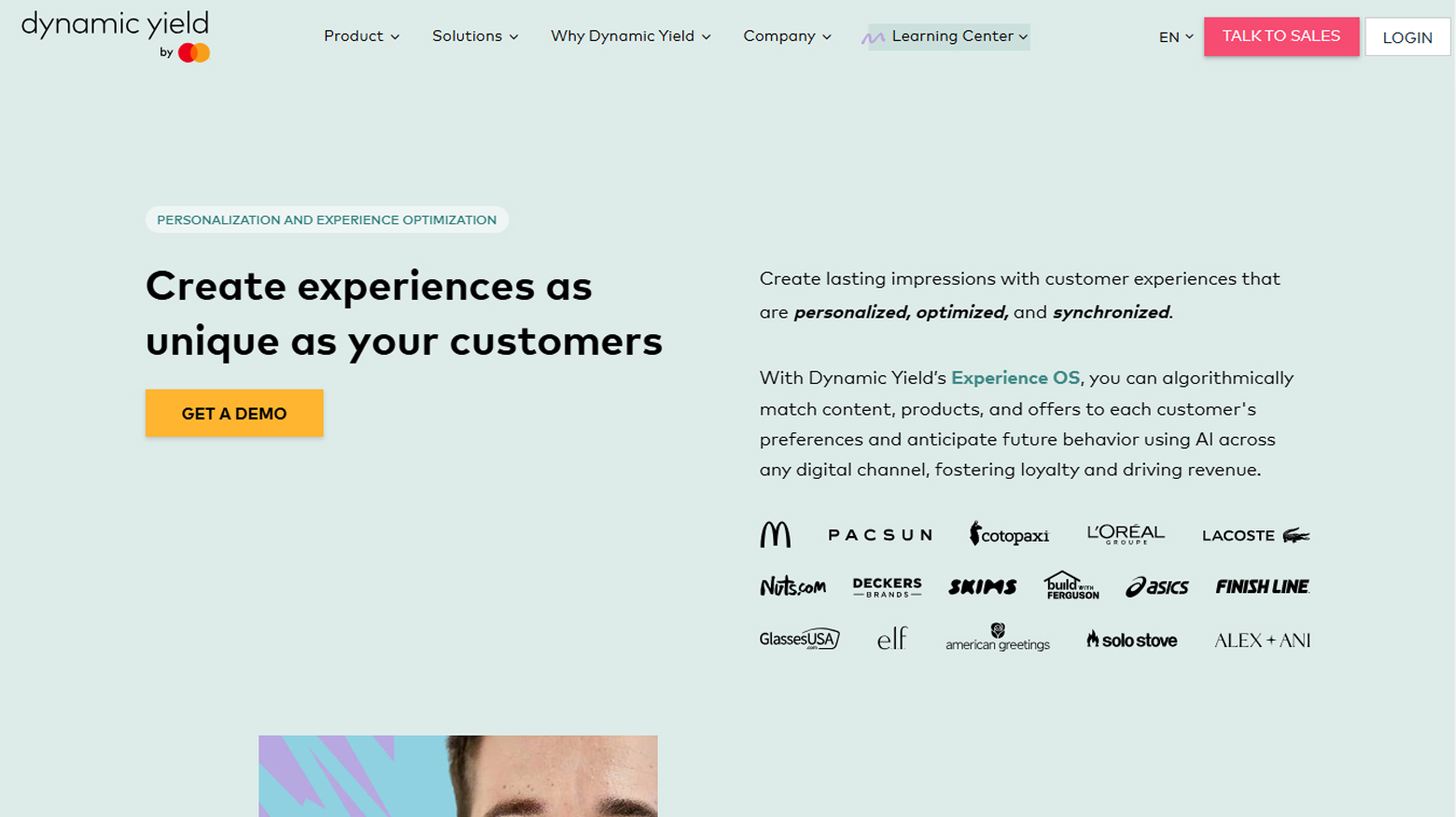
Dynamic Yield helps online stores show shoppers the right products. It uses data to guess what each person might want to buy. This makes shopping easier and more fun.
The tool has a no-code rule builder. You can set up rules to change how products show up. This lets you react fast when your business needs change.
Dynamic Yield works with many other tools. You can use it with your email system, website tracker, and more. This makes it easy to fit into your current setup.
Big brands like Sephora and IKEA use Dynamic Yield. It’s good for medium to large online stores. Shops that sell lots of different items find it most useful.
| Pros | Cons |
|---|---|
| Smart product suggestions | Might be too much for small shops |
| Easy to set up rules | Can be pricey |
| Works with many other tools | Takes time to learn all features |
Nosto personalization engine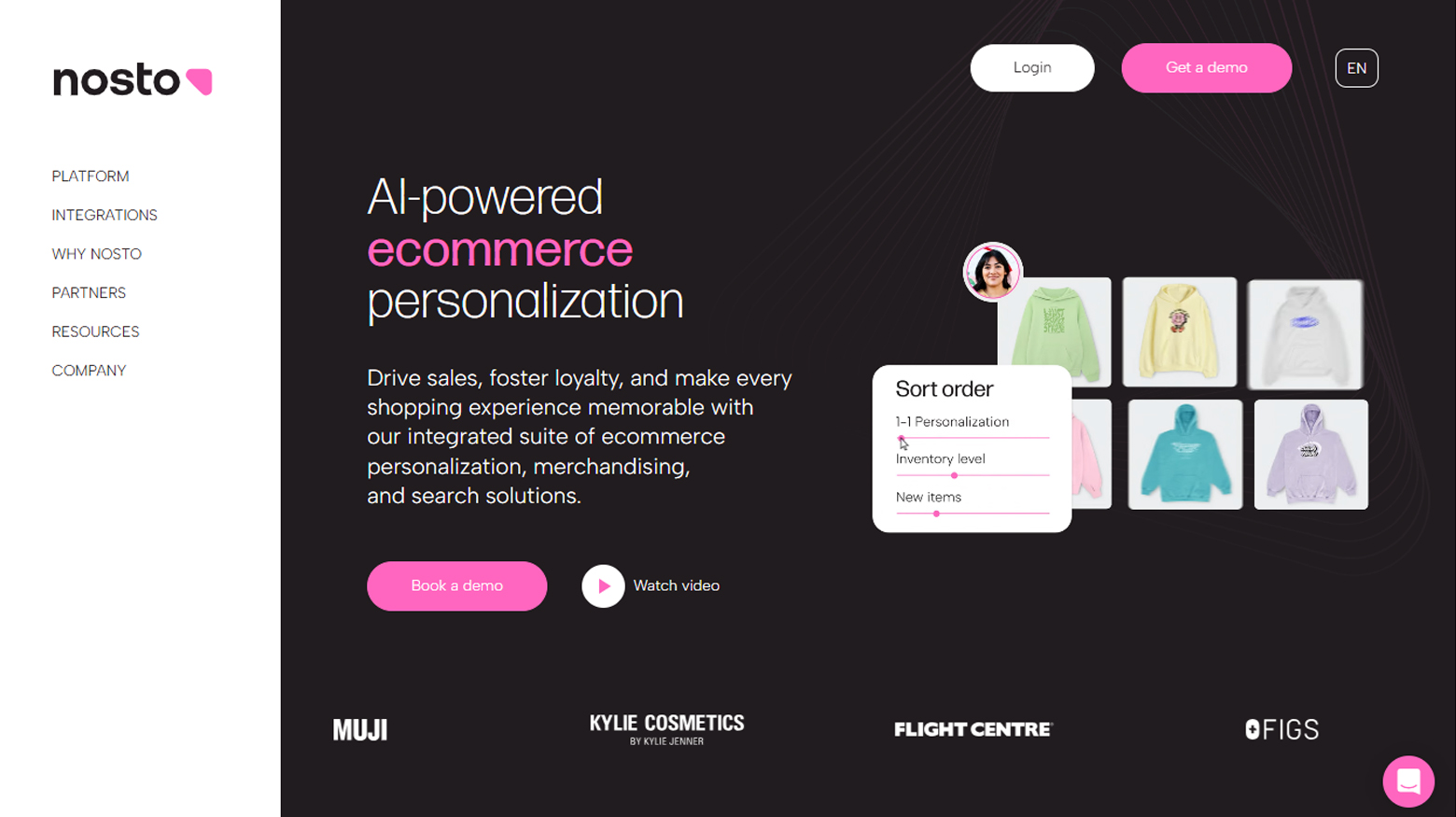
Nosto’s AI-powered platform helps online stores create better shopping experiences. It uses data about what customers like and how they shop to show them products they might want to buy.
Nosto can personalize product recommendations, search results, and category pages. This means you see items that match your interests when you browse an online store.
The platform works for different types of online shops, from fashion to electronics. It’s good for medium to large businesses that want to increase sales and make customers happier.
Nosto collects data on how people shop and uses AI to figure out what products to show each person. This can help stores sell more by showing customers things they’re likely to want.
| Pros | Cons |
|---|---|
| Personalizes product recommendations | May be costly for small businesses |
| Improves search results | Needs time to gather enough data |
| Works for different types of stores | Can be complex to set up |
Klevu search & discovery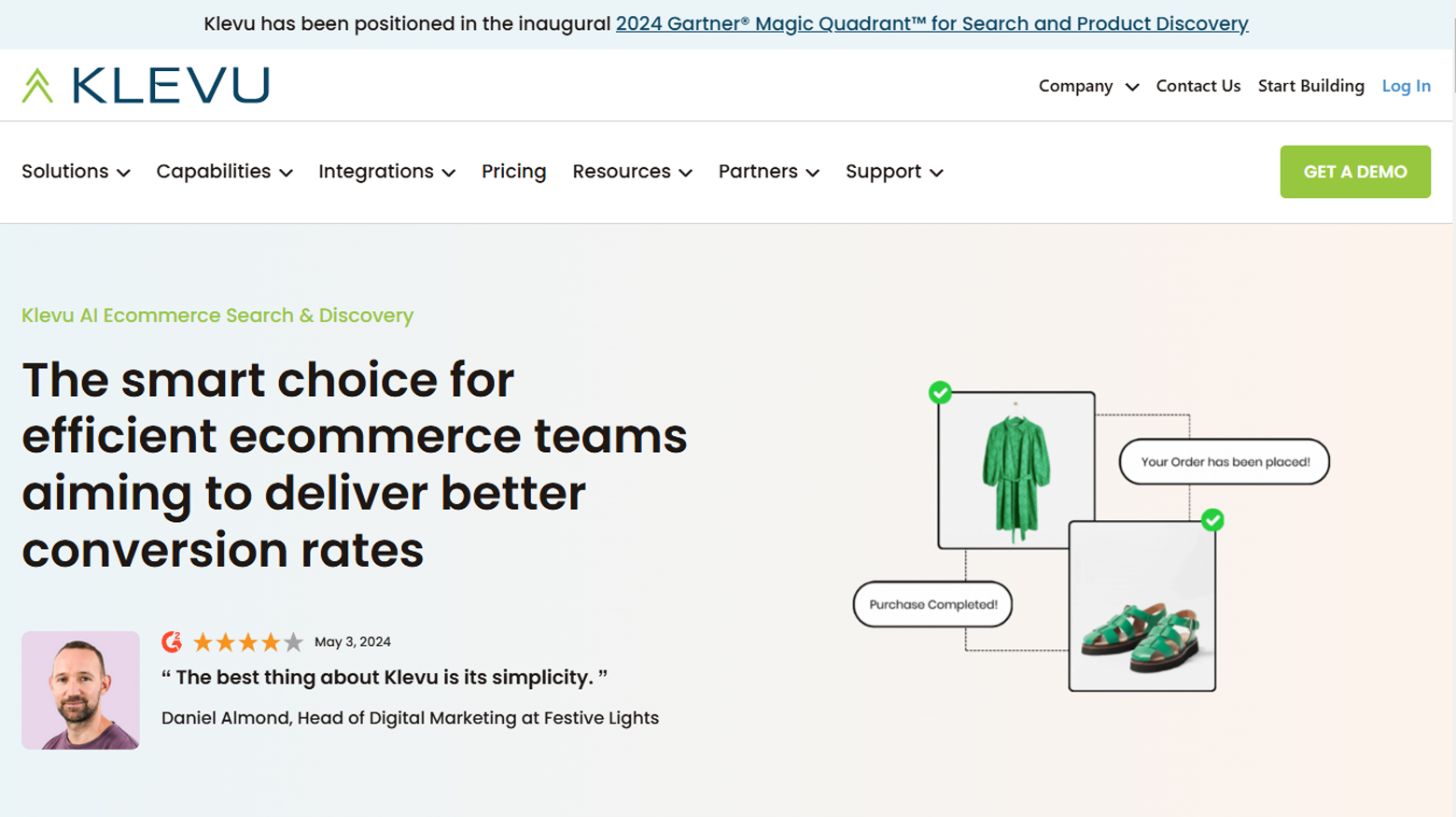
Klevu offers AI-powered search and discovery tools for ecommerce sites. You can use it to improve product findability and boost conversions. The platform includes smart search, personalized recommendations, and category merchandising features.
With Klevu, you can set up an easy-to-use dashboard for fine-tuning search results and product pages. You can apply rules, drag-and-drop items, and pin products to optimize merchandising.
Retailers and brands rely on Klevu to enhance the shopping experience. It works for various industries selling products online. The tool targets mid-size to enterprise-level ecommerce businesses.
| Pros | Cons |
|---|---|
| AI-powered search improves product discovery | May require some setup time |
| Personalized product recommendations | Best suited for larger online stores |
| Easy-to-use merchandising dashboard | Could have a learning curve for new users |
Algolia instant search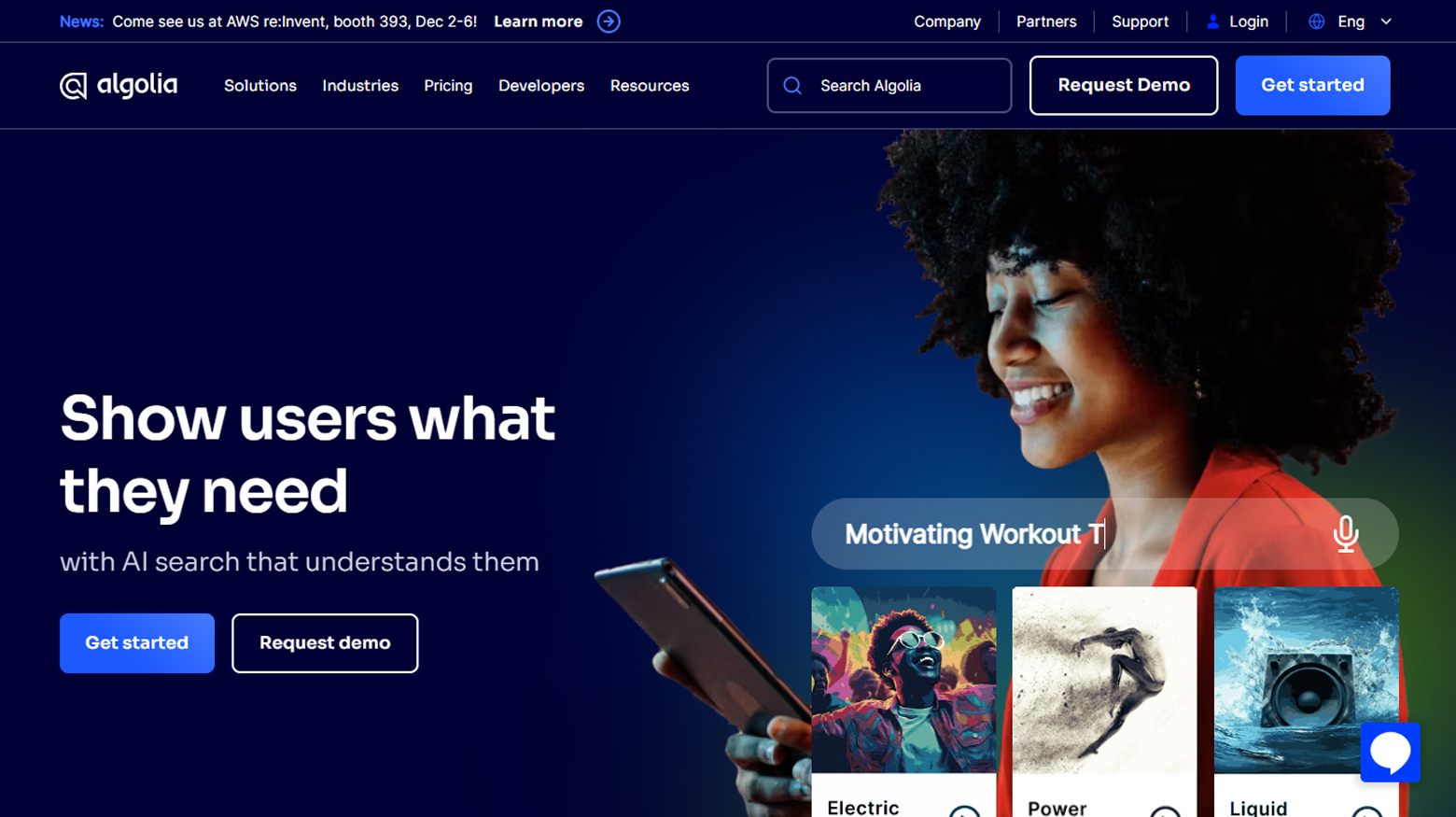
Algolia instant search is a tool that helps you create fast, responsive search experiences for your online store. It lets you build a search interface that updates results as customers type.
You can use Algolia instant search to make your product catalog easy to browse. It works with Algolia’s search API to show relevant results quickly.
The main features of Algolia instant search include:
- Real-time results that update as you type
- Customizable search interface
- Ability to search by product attributes like SKU or description
- Option to combine results from different data sources
Algolia instant search is useful for ecommerce businesses of all sizes. It’s especially good for stores with large product catalogs. Both B2C and B2B companies can benefit from this tool.
| Pros | Cons |
|---|---|
| Fast search results | Requires setup and integration |
| Customizable interface | May have ongoing costs |
| Works with various product attributes | Learning curve for advanced features |

Create your online store in minutes!
Looking to sell online? Develop and launch your store with 10Web AI Ecommerce Website Builder.
Salsify product experience management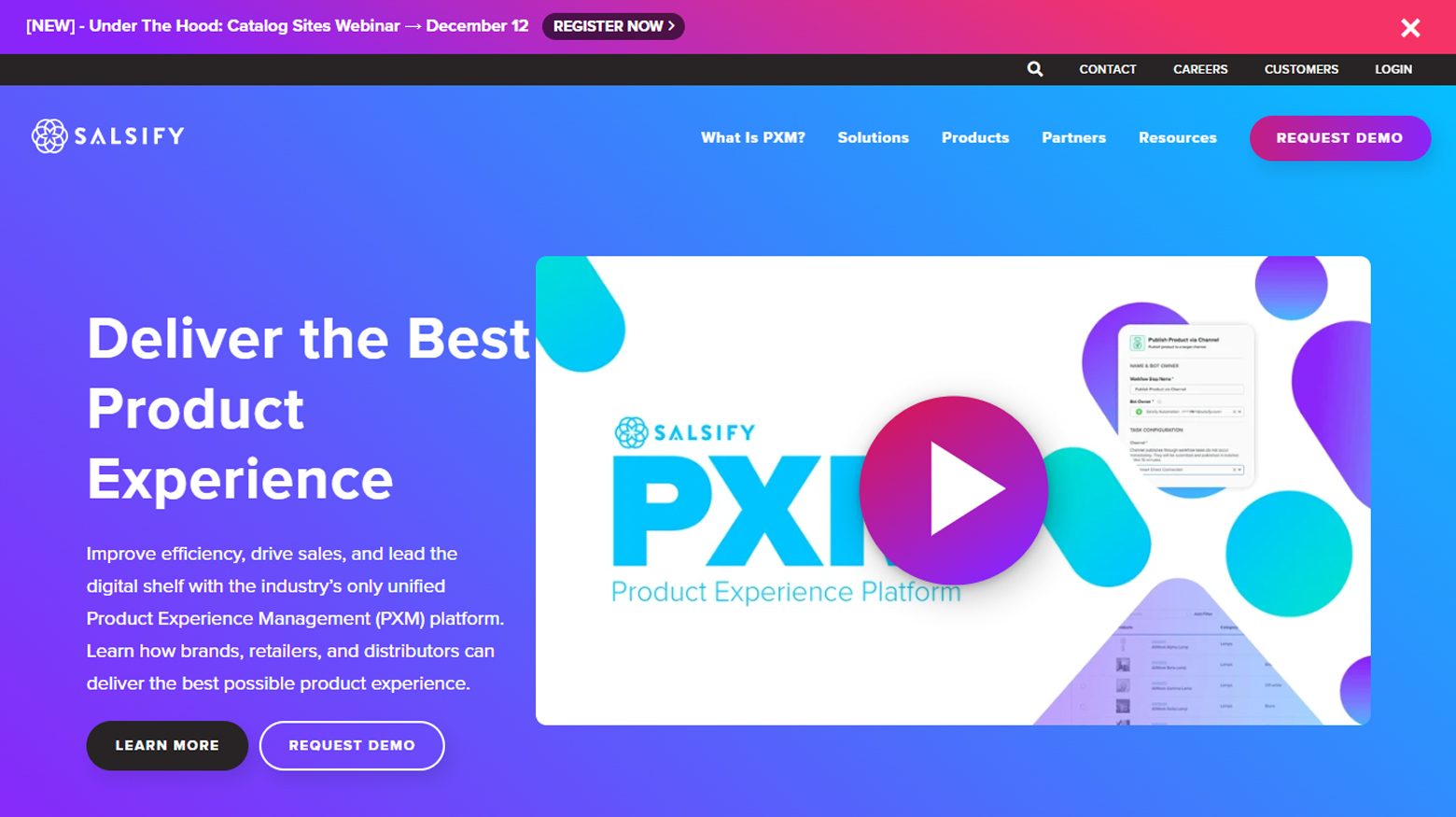
Salsify’s Product Experience Management (PXM) platform helps brands and retailers manage their product content across digital channels. You can use it to centralize product information, sync attributes, and collaborate with team members.
The platform connects to various ecommerce systems and marketplaces. This lets you distribute product content to multiple sales channels easily. You can manage things like product descriptions, images, and specs in one place.
Salsify PXM offers tools for content creation and optimization. You can set up workflows to streamline your product content processes. The platform also provides analytics to track how your products perform online.
Manufacturers, distributors, and retailers use Salsify PXM. It’s helpful for companies selling consumer goods, electronics, food and beverage, and other products. The tool works well for businesses of various sizes looking to improve their digital shelf presence.
| Pros | Cons |
|---|---|
| Centralized product content management | Learning curve for new users |
| Multichannel distribution | Can be pricey for smaller businesses |
| Collaboration tools | Some integrations may require setup |
Zmags Creator
Zmags Creator is a tool that helps you make online shopping experiences more exciting. It lets you turn regular design files into interactive web content. You can use it to create shoppable content that shows off your products in fun ways.
With Creator, you can make new content quickly without needing a lot of tech skills. This saves time and money compared to hiring developers. You can update your website fast to match shopping trends or holidays.
Creator works with many popular ecommerce platforms. This makes it easy to add the content you make to your existing online store. The tool is great for marketers who want to inspire customers to buy.
Brands like Ethan Allen, Timex, and Godiva use Creator. It’s good for companies that sell products online and want to stand out. Marketing and design teams find it useful for making eye-catching campaigns.
| Pros | Cons |
|---|---|
| Easy to use without coding skills | May have a learning curve for new users |
| Fast content creation | Might not fit all website designs |
| Works with many ecommerce platforms | Could be pricey for small businesses |
Bloomreach Experience Manager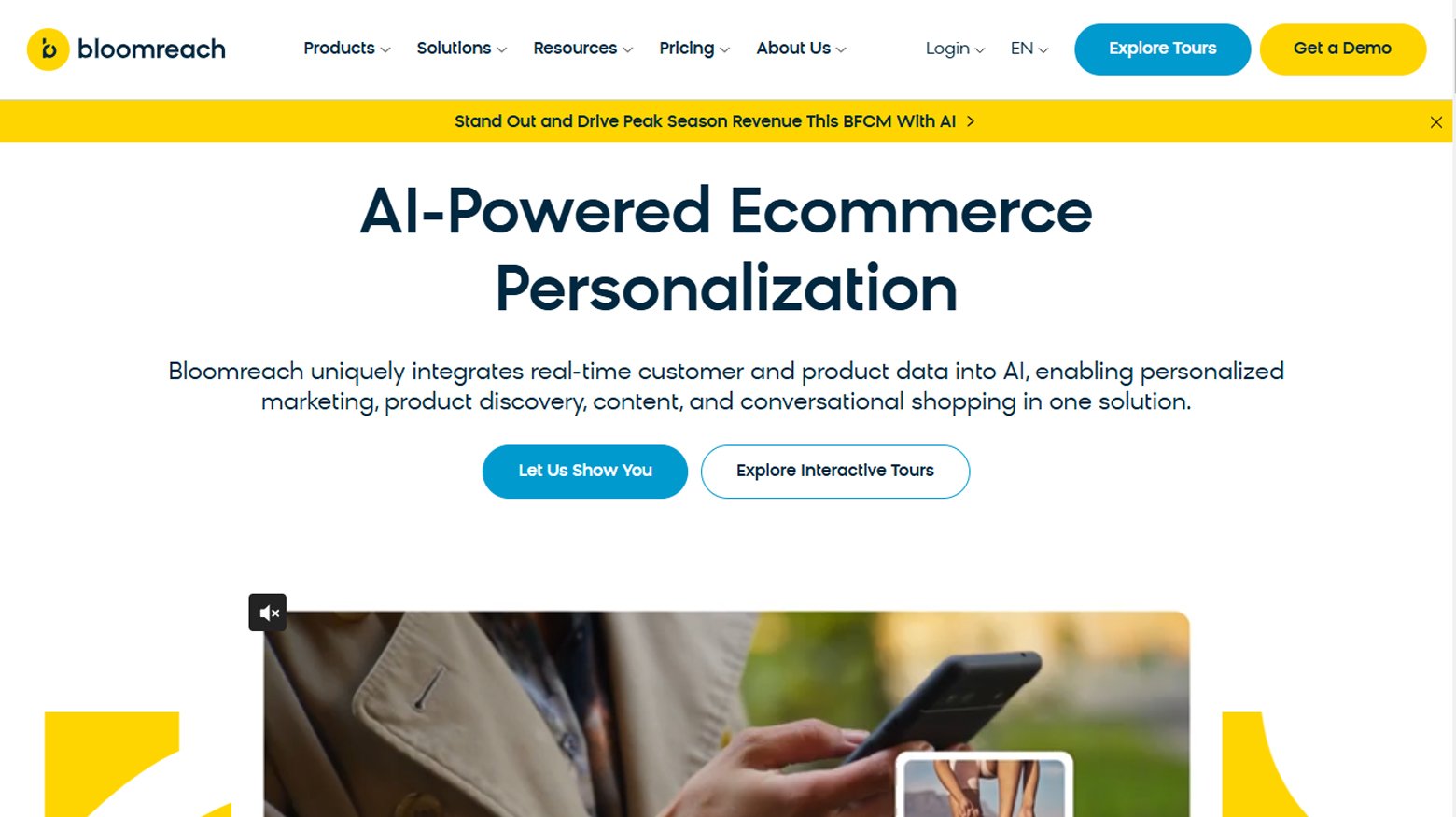
Bloomreach Experience Manager helps you work with content on your website. You can manage pages, components, and other elements easily. It gives you tools to make changes quickly.
With this tool, you can create targeted campaigns. You can display products for set time periods or sales. The software lets you boost, hide, or redirect items on your site.
The Experience Manager makes it simple to preview changes before they go live. This helps you see how your updates will look to customers.
You can use this tool to personalize content for shoppers. This can improve their experience on your site and may lead to more sales.
The main users are ecommerce businesses. It’s useful for companies that want to improve how they show products online. Retail and B2B companies often use this type of software.
| Pros | Cons |
|---|---|
| Easy to [manage content](https://10web.io/blog/website-content-planning/) | May have a learning curve |
| Quick campaign creation | Could be pricey for small businesses |
| Preview changes before publishing | Might need tech skills to use fully |
Conclusion
Ecommerce merchandising tools empower online stores to effectively showcase products, improve the customer experience, and drive sales. This article explored their features, benefits, and integration options while highlighting top tools to use. These tools personalize shopping, optimize product placement, and simplify inventory management, providing actionable insights to enhance store performance.
Leveraging these tools can help you streamline operations, boost customer satisfaction, and maximize sales, making them an essential investment for online retailers of all sizes.

Create your online store in minutes!
Looking to sell online? Develop and launch your store with 10Web AI Ecommerce Website Builder.

